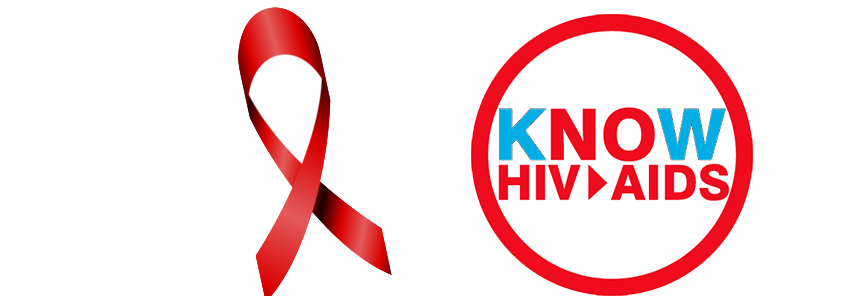HIV/AIDS

- Stage 1: Acute HIV infection. Two to four weeks after HIV exposure, patient has flu like illness fever, headache, sore throat and enlarged lymph glands in the neck.
- Stage 2: Chronic HIV infection: Patient usually do not have any symptoms during this stage which can last for many years to decades with medications. However, patient can spread the virus. There is slow but continuous weakening of the immune system and the virus continues to multiply in the body. Towards the latter stages, they start to develop symptoms like diarrhea, fatigue, herpes zoster and oral thrush.
- Stage 3: AIDS: This is advanced stage of HIV infection. Immune system is severely damaged. Patients develop opportunistic infection or cancer, some very unusual infections (not seen in people with normal immune system). Fever, unexplained weight loss, weakness are common symptoms.
- Unprotected sex: means engaging in sexual act without using a condom. Anal sex has a higher risk than vaginal sex. The risk increases if you have multiple sexual partners.
- Use of intravenous drugs: Transmitted through sharing needles and syringes with someone who is infected with HIV.
- Mother to child transmission: HIV can be transmitted from mother to child during pregnancy, birth, or breastfeeding. In the absence of treatment, the risk of transmission before or during birth is around 20%. The risk is around 35% for breastfeeding.
- Sexually transmitted diseases: People who already have a sexually transmitted infection, are more likely to acquire HIV infection during sex with an infected partner.
- Occupational: Rarely HIV can be contracted in healthcare settings through accidental needle sticks or contact with contaminated fluids.
- Kissing: You can acquire HIV infection from deep, open-mouth kissing of an infected partner if he or she has has oral sores or bleeding gums and that blood gets into your bloodstream from skin breaks during deep kissing.
- Other methods of HIV infection: People may get HIV infection from blood or blood product transfusion and organ transplantation from infected donor. Blood and blood products are routinely screened for HIV.
- Air or water
- Mosquitoes, ticks or other insect bite
- Saliva, tears, or sweat that is not mixed with the blood of an HIV-positive person
- Shaking hands, hugging, sharing toilets, sharing dishes/drinking glasses, with someone who is HIV-positive
- Other sexual activities that don’t involve the exchange of body fluids (for example, touching).
- Antiretroviral therapy (ART): ART is recommended for all HIV infected persons. Combination of medicines is used. They work by different mechanism, either by preventing viral entry into the immune cell or preventing viral multiplication. It is very important to follow up closely with your healthcare provider to monitor for response to treatment, medication side effect and emergence of drug resistance.
- Treatment of opportunistic infections and cancers
- Supportive treatment:
- Stop smoking, alcohol or illegal drugs
- Good nutrition
- Regular physical exercise
- Vaccination against some infectious diseases
- Social and family support
- As a routine care, all adults should be tested for HIV. Person at high risk should be tested more frequently
- If you have multiple sexual partners
- Had unprotected sex
- Had sex with person known to have HIV/AIDS
- When pregnant
- If a pregnant woman has HIV, seek medical care, this is important to reduce the risk to her unborn child
- If you had needle stick injury contaminated with an HIV infected person
- If you are a man who have sex with man
- If you develops symptoms like fever, cough, extreme weight loss, weakness, abdominal pain, diarrhea
- Limit the number of sexual partners
- Use condoms
- Never share injection needles
- Get tested for HIV if you have suspicion
- Pre exposure prophylaxis: persons at very high risk of ongoing HIV infection can lower their risk by taking antiretroviral medicines
- Preexposure prophylaxis with antiretroviral medicines should started as soon as possible after being exposed to HIV. It is taken for 28 days.
Introduction
HIV (Human Immunodeficiency Virus) is the virus that causes AIDS (Acquired Immunodeficiency Syndrome). Infection by HIV weakens your immune system. When the immune system becomes too weak to fight, organisms that would otherwise not cause an infection in a normal person, that person is considered to have developed AIDS. Hence, having HIV infection doesn’t mean you have AIDS. The progression from HIV to AIDS takes many years.
AIDS is a chronic debilitating condition for which there is no cure. People with HIV die form one of AIDS related illness. However, once a disease that caused a rapid death, HIV infection now, can be managed with medications just like other chronic illness. Death from HIV/AIDS has markedly decreased in developed countries but it continues to kill many people in resource poor countries in Africa and Asia.
Stages and symptoms of of HIV infection
Risk Factors
HIV spreads when the body fluids of infected person enters the bloodstream of the exposed person. Coming in contact with body fluids like blood, semen, rectal fluids, vaginal fluids and breast milk of an infected person can HIV spread HIV. Conditions that increase risk of HIV infection are the following:
HIV does not spread by:
Diagnosis
HIV infection is suspected based on the symptoms, exposure history and presence of risk factors. The diagnosis is confirmed by checking antibodies in your blood against the virus. However, it takes upto 12 weeks to develop an antibody after acquiring the infection. Hence , these days diagnosis is made by directly detecting a viral protein in the blood which can be detected very early after acquiring infection. After the diagnosis, you will need other tests to tailor treatments. Your doctor will check the number of immune cells in your blood, number of virus particles in the blood.
Treatment Options
There is no cure for HIV infection. However, once a nearly fatal disease with rapid progression, people with HIV live a fairly long life these days with medications. Treatment consists of
Who to get tested for HIV?
Prevention



Send us your feedback on this article